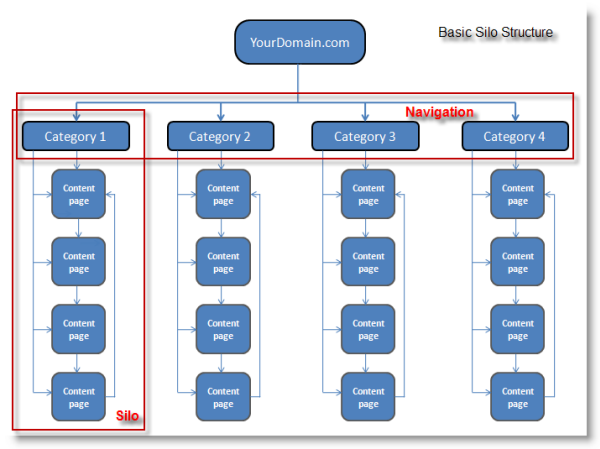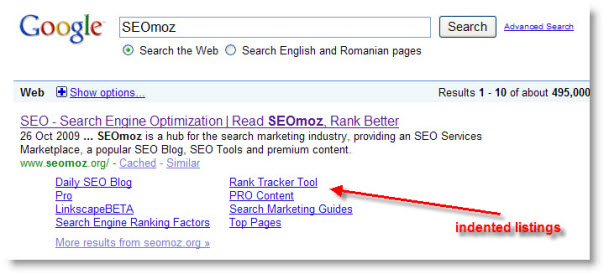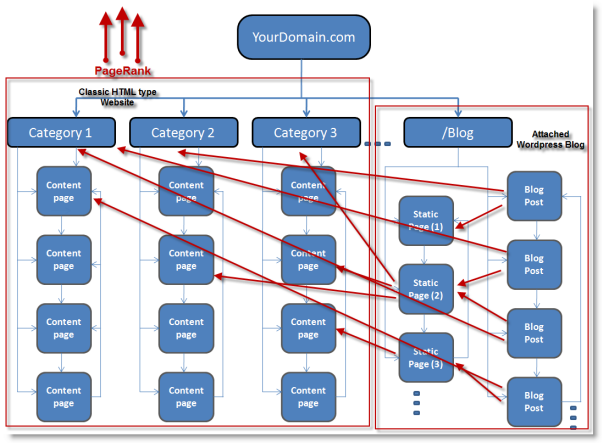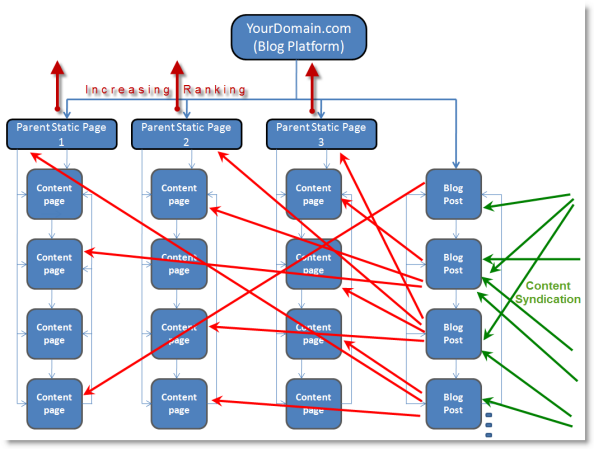 What is a “Silo Structure” and Why should you be interested
What is a “Silo Structure” and Why should you be interested
In a nutshell, it has to do with website design and internal linking strategy. Silo structuring promotes the idea of building your website with highly optimized narrow blocks of content grouped in the classical website categories, called silos.
Each of these categories will be treated like individual websites, in other words running thorough on page and off page optimization campaigns.
The end product will be one solid, authority site, sustained by its optimized individual categories and that requires a minimal number of backlinks in order to rank high in SERPs.
Silo structuring your website permits to dominate your market by methodically becoming the major marketer in all obscure and more prominent niches that make up your overall market.
Where did this “Silo structure” method emerged from
The concept of Co-Occurrence Matrix is what justifies Silo Structuring as a SEO method and it has to do entirely with keywords. Here’s the big picture:
> Google uses authority sites in online markets as references by which it grades new entries;
> Google keeps record of representative keywords indexed on those authority sites; this is how the Co-Occurrence Matrix is being built and the brick and mortar are related, synonym keyterms representative for each market (e.g.: Michael Jordan and BasketBall).
> Google compares the content on your webpages with keywords extracted from authority sites and apoints you a so-called trust score. Although similar to PageRank this score is for Google private use only.
How to implement the concept of Silo Structuring
Basically, Silo Structure Method comes down to:
1. creating laser focused category pages;
2. isolating each category, subpages included; this is what makes a silo a silo;
3. building internal links between content pages from the same category;
4. executing backlinking campaigns for each silo; do guest posting and article submission (automated through an article submission software) for a bigger bang out of your efforts.
By implementing these four points, you build a more SEO friendly website. What this means is making it easy for Google to crawl, categorize and finally compare it, through its co-occurrence matrix, to authority websites in your market.

Important Silo Structure Sidenotes:
- designate your top money keywords as titles for each category or Silo;
- the objective is to build authority for each Silo; again, only interlink content pages from the same Silo;
- if you still want to link to other categories, make it with their landing page (navigation links and no deeep link); this benefits you because landing pages contain money keywords and by linking to them helps build their PR.
- note that each optimized Silo will contribute to website’s ranking in SERP’s. Factors that increases Silo efficiency: number and quality of inbound links and relevant and quality content.
N.B.: Once indented listing begin to show up when you do a search in Google for your website, Silo Structure is being validated as a SEO Method. What’s an indented listing? Those “category” type of listings assigned to some authority websites, just below the linkable title and meta description (in SERP).

Using Silo Structuring with different web design scenarios
1. Blog attached to domain | www.yourdomain.com/blog
Use the following linking patern:
- Link to Static Pages in the blog from your blog posts;
- Link to Main Site Pages from your Blog Posts: Homepage, silo landing pages and content pages;
- Practice deep linking and vary the anchor text;
- Vary the number of links per post, even cut them to zero; a good ratio is 1 link per 50-100 words;
- Link to other posts;

Benefit: PageRank gained from syndicating your blog posts is passed to blog’s static pages, and category pages (silo landing pages) in main website.
Blog Post Categories Should Be the Same or Similar to Your Silo Categories. This helps Google categorize your content.
2. Silo structured blog
This applies to wordpress based websites. The Silo’s landing pages are built with blog static pages that “subordinate” content webpages.
Blog Posts will provide exposure and traffic through syndication translated in PageRank for each individual Silo and ultimately high rankings for the whole website. Linking patern remains the same.
I encourage using Silo Structure in search engine marketing at the same degree as backlinking campaigns because it creates favorable conditions for building highly optimized blocks of content that provide in depth documentation for representative online markets.

What do you make of this strategy? How does it sound to you? Any weak points detected after this primary reading?


















Do you know of any wordpress plugins that help with the silo structure layout
Since Silo structuring it’s all about the inner link network of a website, any kind of automation is not advisable. At least I wouldn’t use it…
Hi, great job on seo informations. I did not expect this.
Christian,
Can you elaborate on this:
“Since Silo structuring it’s all about the inner link network of a website, any kind of automation is not advisable. At least I wouldn’t use it…”
I’m interested in building site using the silo structure, but it seems as if a plugin would save quite a bit of time.